Satisfying Your Customers Need for Speed Today written by John Jantsch read more at Duct Tape Marketing
Marketing Podcast with Brett Martin
 In this episode of the Duct Tape Marketing Podcast, I interview Jay Baer. Jay is a customer experience and digital marketing pioneer, expert, advisor, researcher, and analyst. Jay has written 6 best-selling books and founded 5, multi-million dollar companies. His very popular twice-monthly newsletter is at TheBaerFacts.com.
In this episode of the Duct Tape Marketing Podcast, I interview Jay Baer. Jay is a customer experience and digital marketing pioneer, expert, advisor, researcher, and analyst. Jay has written 6 best-selling books and founded 5, multi-million dollar companies. His very popular twice-monthly newsletter is at TheBaerFacts.com.
Key Takeaway:
How fast is fast enough for today’s demanding consumers? Your customers are deciding to buy from you today (and every day) based on how fast you are (or aren’t). In this episode, I talk with Jay Baer, a customer experience and digital marketing expert, about his latest study: Time To Win. This national study of more than 1,900 consumers is a deep dive into the critical correlation between speed and customer satisfaction, loyalty, purchase propensity, and more.
![]()
![]()
Questions I ask Jay Baer:
- [2:01] What was the methodology for The Time To Win research study?
- [3:10] Is the major hypothesis here that the faster you can respond the better?
- [4:11] So I call businesses today and I find myself giving them a pass because I know it’s hard to get help today – are you suggesting that I’m an outlier with this mindset?
- [5:01] How do you see the differences in the need for speed in your communication with new prospects that are coming in via lead gen and with those who are already existing customers?
- [7:18] Is there a specific response time number you should respond in?
- [11:54] What generation was the least patient generation?
- [12:59] The typical small business owners are out there saying they have so many channels to keep up with to respond to clients, customers, or prospects and that it is hard to keep up – who’s got time for all of that?
- [14:23] Could you also make the leap and say you could charge more if you responded faster?
- [16:05] Do you run the risk of that being off-putting?
- [17:08] Does speed fall into the building trust?
- [19:19] What role does automating speed play?
More About Jay Baer:
- Sign up for his newsletter — The Baer Facts
- The Time To Win Research Study
Take The Marketing Assessment:
Like this show? Click on over and give us a review on iTunes, please!
John Jantsch (00:01): This episode or the Duct Tape Marketing Podcast is brought to you by Content Is Profit hosted by Luis and Fonzi Caho, brought to you by the HubSpot Podcast Network. Discover the secrets and strategies of how your business can achieve the frictionless sale. They talk about frameworks, strategies, tactics, and bring special guests to bring you all the information you need in order to turn your content into profit. Recent episode, The power of just one big marketing idea and How to get it really brings home this idea that instead of chasing the idea of the week, really lock in on one big idea to differentiate your business that can make all the difference in the world. Listen to Content Is Profit wherever you get your podcasts.
(00:55): Hello and welcome to another episode of the Duct Tape Marketing Podcast. This is John Jantsch. My guest today is Jay Baer. He is a customer experience and digital marketing pioneer, expert, advisor, researcher and analyst. He’s written sixth bestselling books. Couple you’ve probably heard me talk about here on the Duct Tape Marketing Podcast. He’s also got a great popular twice monthly newsletter. Go get it. It’s called The Bear Facts, and you can find it@thebearfax.com. We’re gonna talk about a research report that he just participated in compiling on consumer patients and business responsive. I have no patience, so I can’t imagine what this is gonna be about. But it’s called Time to Win 2022 Consumer Price Patient Studies. So Jay, welcome back to the
Jay Baer (01:43): Show. Thanks so much, John. Great to be here as always.
John Jantsch (01:46): So you’ve really, you know, it used to just be enough to be a mark, an author, speaker, and consultant. You’re like a pioneer and expert research or an analyst. I mean, I’m,
Jay Baer (01:55): My mom’s an English teacher, so I just said, gimme a list of adjectives or Simi, and I work with that.
John Jantsch (02:01): All right, so, So time to win research study, Just what was the methodology? What were you trying to compile?
Jay Baer (02:06): Yeah, so I’ve been really interested in speed for a long time, as I know you have as well. In all of my books, there is at least one section about speed and how speed is a competitive differentiator in business. This is the deepest dive I’ve ever done though. I said, I’m gonna do a whole research study on speed, responsiveness, and consumer patients. The thesis here was the pandemic has changed our relationship with time. That when you take a bunch of things that used to be offline and you move ’em online, naturally online, you think things should happen faster. And five minutes of waiting online feels like an eternity offline. You can probably get around it. And so the thesis was that we think differently about time now because of the pandemic and the research bore that out. I partnered with Stats Social, talked to 2000 American customers, ages 18 to 65, normalized to the census. It’s good research. You know, it’s plus or minus, it’s two and half percent. You know, this isn’t a 200 person, you know, research, this is a real deal.
John Jantsch (03:00): So, you know, I’m, we all have anecdotal stories, right? If we called three contractors and the only the one that called us back
Jay Baer (03:20): Yes. And that is true. 53% of consumers have hired a company that responded first, even if they were not the least expensive. So, so that anecdote rings mathematically true in this research. So clearly there is a business imperative to be first in a competitive scenario, but there’s also a bunch of other economic consequences of being faster and slower than customers expect or anticipate. So we documented all of those in the research. So there’s big attitudinal shifts amongst consumers. There’s big, you know, likelihood of spending money or not spending money in loyalty as well. So all the things that businesses care about, making sales, making repeat sales, average order size, consumer psychology, et cetera, et cetera, et cetera. Each and every one of those is impacted by a business being faster or slower than customers anticipate.
John Jantsch (04:11): So, you know, I call businesses today and I find myself, Oh gosh, they didn’t answer the phone. God love ’em. But you know who nobody can get help anymore. I’ll give ’em a pass. I think you’re suggesting that I’m an outlier.
Jay Baer (04:23): Mathematically, you are an outlier, and this is one of the most interesting statistics in this time to win research study. The time to win.com is that 83% of consumers expect businesses to be as fast or faster than they were before the pandemic. So this notion that, oh, labor shortages, supply chain force, pelan, fire, you know, flood tsunami, it’s okay, we understand they don’t care anymore. Like it’s been a couple years and I think consumers are like, you know what, like you’ve had two years to sort it out and we feel it for you, but I still want it right now. Sorry.
John Jantsch (05:01): So I spend a lot of time, you know, really talking about this idea with lead generation. So, you know, somebody goes out there and they click on something or they click on that little chat bubble. Yep. And they want to, you know, they wanna get ahold of somebody very quickly. But you specifically are focusing as much on customer experience maybe after somebody’s a customer as well. I mean, how do you see the differences in those two elements?
Jay Baer (05:23): Yeah, we actually broke it down by customer journey scenario. Yeah. So in the research we say, Okay, how much is speed and responsiveness important to you? When you’re finding out about a product, you’re sort of in the research phase. How much is it important to you when you’re getting an appointment? How much is it important when you’re paying for something? How much is it important when you need help, have a question, et cetera. And so across, I think we looked at six or seven different nodes in the customer journey. It’s crazy. Speed is important in all of them, right? There is no scenario under which speed is not important. And in fact, two thirds or more of customers say that speed and responsiveness is important or very important in every single step of the customer journey. Two thirds of customers. Now, there are scenarios when it’s even more important.
(06:11): So if you need help, like something is broken and you’re like, I need you business company person, you know, contractor to fix this leak of in my plumbing, then it’s even more, you know, important. Then it’s upwards of 83%. But it is actually really interesting, John, I thought that we would see a greater difference that people would say, Look, when I’m just in research, I’m just like, Right ITing the tires. Like what sweater do I wanna buy? It’s not that important for it to be fast. Nope. Super important then too. It’s important all the way across the line. And I think part of that is just the world we live in now, and the fact that our expectations around speed and responsiveness have just changed a lot. I mean, five years ago what was, you know, fast then is slow today.
John Jantsch (06:55): Yeah. And I really get that about in the presale environment because I mean, we may not go to ourselves and say, I’m gonna try out this company and see how fast. Right. But we are trying them out. Right? Absolutely. I mean that’s, it’s like if that’s the experience when I haven’t bought anything, you know, that’s what I can expect it to be after I do. Right. Or worse
Jay Baer (07:25): It’s a great question. It actually depends, as you might suspect on channel, because consumers have a different expectation for response time based on what they’re using to interact with you. So, so we actually asked about website chat versus phone versus text message versus social media, et cetera. And generally speaking, people expect a reply within four hours for everything except for email contact us form, and an online review. Everything else is within four hours, so in some cases faster. But if you can say, Hey, we’ll get back to you within four hours across the board, unless it’s sort of a contact us form. And even then it was kind of surprising we asked about this, you know, the contact us form is usually like the redheaded stepchild of contact mechanisms, right? Like every business has one, but people figure, well, if they’re using that, they can’t be that important, right? Uh, turns out 67% of customers expect businesses to reply to a contact us forum within 24 hours. And that doesn’t happen very often.
John Jantsch (08:30): Yeah. Yeah. I mean, I have clients that 50% of their leads come in through that vehicle
Jay Baer (08:35): Still. Yeah. But, and they probably, you know, respond, responding two or three days and it’s like, what if you could shave that down for like six hours?
John Jantsch (08:43): No, Jay, they’re clients of mine. I mean, we have an automatic response that goes out immediately. It sends them to tax.
Jay Baer (08:48): Oh, clients of yours. Yeah. You gotta figure
John Jantsch (08:50): It out. It does. There seem to be a correlation between the gravity of the purchase. So in other words, if I’m buying a a $29 thing, maybe there’s one need for speed as opposed to this is going to be a long term significant, you know, months over months investment.
Jay Baer (09:04): Great question on the purchase, on the research and purchase side. No, actually, because whatever you need at that time, whether it’s socks or a car, you
John Jantsch (09:11): Need that. That’s important.
Jay Baer (09:12): Yeah. You need that thing right now. That’s why you’re doing this at all. Now, there’s definitely a little difference in, in urgency if your car is broken versus your sock has a hole in it that, you know, there’s a, there’s an implication difference there. But ultimately, if you are in the mode to go get a thing or you need help, you want that help. Now, nobody ever says, You know what? I’ve been thinking it’d be fine if you guys did that more slowly. Nobody ever says that.
John Jantsch (09:38): Right? Except to the brain surgeon
Jay Baer (09:43):
John Jantsch (10:16): I always actually assume some, I always just assumed somebody else sent those back.
Jay Baer (10:20): Right, exactly. I didn’t want these. Give ’em to John. Yeah. So you can be too fast. But I don’t wanna belabor that point because for most businesses and most scenarios, Yeah. You know, we’ve all heard that the old saw good, fast, cheap. Pick any two, right? When I will tell you, having done this research is fast, should be one of ’em. And then you decide whether you want to be fast and good or fast and cheap, but it should always be fast.
John Jantsch (10:41): And now a word from our sponsor, marketers are a key part of business. Uh, funny, I would say that, right? But that’s because we own the conversation with our customers and having tools that help us have meaningful conversations with our customers at scale, all while maintaining a personal touch is our white whale point solutions can be easy to set up, but difficult to manage and maintain, and all of a sudden you find yourself with disconnected teams and data leading to poor customer experience. Yikes.
(11:14): HubSpot is an all in one CRM platform that is impossible to outgrow and ridiculously easy to use, meaning you never have to worry about it slowing you down. That’s because HubSpot is purpose built for real businesses. Businesses that test and learn, pivot and push and do it all again next quarter with customizable hubs and tools that you can add or subtract as you grow. HubSpot is ready to help you stop chasing the white whale and start connecting with your customers at moments that matter most. Learn how HubSpot can help your business grow better @ hubspot.com.
(11:54): All right. So I know that you did some ranking by demographics mm-hmm.
Jay Baer (12:04): Isn’t that fascinating? There’s a few things in here that, that definitely differed from my preexisting expectations when I started this process. And one of those is just that John, that baby boomers are the least patient and Gen Z, the youngest Americans, or the youngest adult Americans, I should say, are the most patient. I didn’t see that coming, but then I thought about all the baby boomers I know, and I’m like, Yeah, actually that does kind of add up. And I think it’s sort of, for the younger folks, I think they haven’t necessarily been disappointed enough, or maybe their time isn’t as valuable because maybe they’re not in their professional life yet, they don’t have kids. Or maybe they’re just so used to being disappointed by business, um, that they are like, Yeah, I didn’t expect much anyway. But the baby boomers are the least patient. They expect a response time within four hours, more so than any other generation. I
John Jantsch (12:52): Think we don’t have as many weeks left.
Jay Baer (12:54): That’s it. Maybe that’s it. It’s like, I don’t got a lot of time. I gotta get this yard mode now
John Jantsch (12:59):
Jay Baer (13:23): Yeah, I think you’ve gotta, you’ve gotta make the time.
John Jantsch (13:26): Yeah.
Jay Baer (13:26): It, it’s not about whether or not you have the time. You do have the time. You’re just using that time to do something else. And I think what this research indicates pretty cleanly is that it is an investment and it’s an investment worth making because there are material economic correlations between responsiveness and spending, between responsiveness and customer loyalty. There are things that you’re doing today and your small business that take up your time. And I would ask you to spend some time with this research and then consider are those things that you are doing instead of being faster when you respond to customers worth doing, are they making you money or saving you money at the same level that just being faster would, And I would argue that in many cases the answer is no.
John Jantsch (14:10): A hundred percent
Jay Baer (14:27): Absolutely. Dramatically. So two thirds of the customers say that speed is as important as price. That’s a pretty giant number. Two thirds. Yeah. Say speed is as important as price. And so we ask people like, would you spend more money if things were faster? And absolutely they would. And it’s pretty staggering. Now, this is not doable operationally for everybody, but we ask people like, Okay, what if you didn’t have to wait? Right? So what if you had this magic scenario where, you know, everything was instantaneous and people would spend dramatically more o on that, in some cases, as much as a hundred percent more. They absolutely love this idea. It is, as I talked about in the research, it’s the idea of like the bus, the Disney fast pass, right? That’s one of the greatest inventions ever. Like, you already paid Disney, but what if you don’t have to wait in line?
(15:22): How much more would you pay the answer a bunch? And so I actually think it, it’s a, it’s an interesting thought exercise for almost all businesses to say, Well, could we offer a parallel service where we do the same thing we’re already doing, but we just do it faster? You, you sort of jump the line, right? I mean, if you’re an attorney, yeah, if you’re an accountant, if you’re certainly an auto mechanic, if there’s a lot of businesses that could actually unfer all that kind of concierge class service. And this research shows that you would have very little price resistance.
John Jantsch (15:57): It’s interesting. I mean, you think back to the days of like printing and whatnot, you know, it’s like you wanted in two days, it cost this price you wanted in a week, You know, it caused this price. Do you run the risk of that being off putting? Like why don’t you just deliver it that fast anyway to everyone?
Jay Baer (16:11): Yeah. You know, it’s a real, that’s a really interesting question. I think there was a time when you would’ve run that risk. Yeah. But I think there’s enough businesses and enough categories of business that have now tried and succeeded in some kind of first class get faster framework. Like, like, you know, even Uber does it now, right? They, they have this new thing where, yeah, you can get your car in six minutes or for an extra 20% we’re bringing the car in three minutes, right? And so th this idea is becoming popular enough that we start to see it more and more, and then the more and more we see it, I think we get to the point where we don’t feel bad if it’s presented to us as an option.
John Jantsch (16:53): Yeah. The unfortunately, the jokes on us on Uber, because it’s the same car. Oh,
Jay Baer (16:57): For sure. Yeah. All it is purely, it is an absolute just pure naked profit play, but good on
John Jantsch (17:05): All right, so, uh, let’s talk about another factor. Trust. Does speed fall into the building trust category?
Jay Baer (17:12): Huge. It, it does up to a point, right? So if you can be as fast or faster than customers expect at whatever stage of the customer journey we’re talking about, it builds trust because the implication is, wow, they really have their act together. They were able to call me back, email me back, you know, get me a car, whatever the circumstances are as good or better than I thought. That builds trust. However, going back to our previous example, when you are too fast, when you are instant enchiladas, when you are any tattoo in 20 minutes, when you are, you know, hey, I do LASIK in three minutes on your eyes, it, it actually reduces trust. So there is in literally every business, there is a point when you can get too fast. Like even in a professional services capacity, like if you’re looking for an accountant and like, like to have an appointment to come in and talk to you about your services, I’m like, great, what are you doing in the next hour? You’re like, Wait a second, this firm is not very busy. And yes, that’s really fast, but how can they be that fast? Right? It starts to, you start to really question the whole enchilada, so to speak. So yeah, you want to be, I call this John the right now, The right now is when you are slightly faster than customers think you should be. And then it’s like the magic, you know, warm portage, right? You’re like, Oh, perfect. But when, when you’re too slow, obviously it’s a problem. And when you’re too fast also a problem.
John Jantsch (18:41): Yeah. So, so the lesson to the accountant is that even if you have nothing going on, tell ’em it’ll be a week after next Tuesday.
Jay Baer (18:49): Ab I mean, literally, yes, that is the lesson. That is absolutely the lesson. But I will say, you gotta figure out what that is, right? So this is kind of what the speech is gonna be about when I get it finished. This idea of the right now is you have to figure out what that is in your business and for your clients. There is no blank. I can’t say, I can’t say, you know what you should do? If someone calls for an appointment, you should give them an appointment in 48 hours. I can’t tell you that. What I can tell you is give you a recipe and a methodology for figuring out what the right now is in your business.
John Jantsch (19:19): So I was gonna go to automating speed as really the next, and that really is a, this is a part of it, right? Yeah. Because I think that sometimes if people sit, think you’re sitting there waiting for that message, you know, and it’s like, okay, now I’m gonna reply, right? That, that nobody believes that’s actually going on. That’s, And so if our automations don’t factor the right now, that that can be equally as damaging, right?
Jay Baer (19:42): We have to understand that there is a difference between response and resolution. Ideally response and resolution are one, but we understand in the real world, that’s not always the case. And so a quick response and a slow or non-existent resolution is better than a slow response
John Jantsch (20:20): And that might look like the text, a message that comes in on a weekend that just sets the expectations.
Jay Baer (20:24): We got your message. Got it. We
John Jantsch (20:26): Got, we got it. And it’s gonna be Monday. That’s it.
Jay Baer (20:28):
John Jantsch (21:00): There are definitely are a lot of hastily written notes on walls
Jay Baer (21:03): And restaurant. It’s always napkin,
John Jantsch (21:04): Please stop abusing our employees. It’s
Jay Baer (21:07): Just not very well done. I mean, make it, you know, shoot a video from the owner that heartfelt explains with some level of detail what’s going on. And then have a QR code that goes to that video like do it, you know, message it better. There’s a restaurant here in town who doesn’t have Turkey. They can never, they never have Turkey. Now it’s like some sort of mythical Turkey shortage. You’ll give you a chicken for free, you can’t possibly get Turkey. And every time I ask, Where’s the Turkey? We don’t know. We can’t get Turkey anymore. And I’m like, what are we living on Mars? We don’t have Turkey anymore. What’s going on?
John Jantsch (21:34):
Jay Baer (21:43): You bet. There’s the survey. You’ve got infographics, videos, a lot of key facts and figures that you can pull out to help implement this in your own business. And I hope that you do because being faster will make you more money. I can promise you that. Well,
John Jantsch (21:55): Well, I am doing a webinar tomorrow on this around this topic. I’m gonna steal some of your staff. Please do to Jay. All right, I shall. I will give you credit in four point type in the corner. Thank
Jay Baer (22:04): You. As it industry standard, thank you.
John Jantsch (22:06): As is industry standard. Jay, it was awesome as always for you to stop by the Duct Tape Marketing Podcast and hopefully I’ll run into you. Are you gonna be at Marketing Pros?
Jay Baer (22:15): Uh, I’m not gonna be there this time. I was there last time, so I try and alternate to your, but I’ll see you down the road somewhere.
John Jantsch (22:20): Yep. Yeah, absolutely man. Next time I’m in Indiana or so, Appreciate
Jay Baer (22:24): It.
John Jantsch (22:24): All right, take care, bud. It. Hey, and one final thing before you go. You know how I talk about marketing strategy, strategy before tactics? Well, sometimes it can be hard to understand where you stand in that, what needs to be done with regard to creating a marketing strategy. So we created a free tool for you. It’s called the Marketing Strategy Assessment. You can find it @ marketingassessment.co. Check out our free marketing assessment and learn where you are with your strategy today. That’s just marketing assessment.co. I’d love to chat with you about the results that you get.
Sign up to receive email updates
Enter your name and email address below and I’ll send you periodic updates about the podcast.
This episode of the Duct Tape Marketing Podcast is brought to you by the HubSpot Podcast Network.
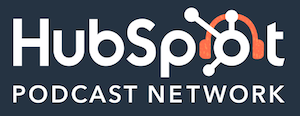
HubSpot Podcast Network is the audio destination for business professionals who seek the best education and inspiration on how to grow a business.
Did you miss our previous article…
https://www.sydneysocialmediaservices.com/?p=2857

 In this episode of the Duct Tape Marketing Podcast, I interview Brett Martin. Brett is
In this episode of the Duct Tape Marketing Podcast, I interview Brett Martin. Brett is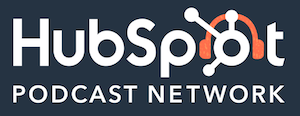
 In this episode of the Duct Tape Marketing Podcast, I interview Dr. Paul J. Zak. Dr. Zak
In this episode of the Duct Tape Marketing Podcast, I interview Dr. Paul J. Zak. Dr. Zak 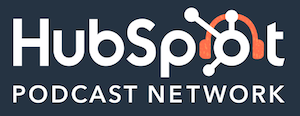
 Air is the leading platform for marketing teams to manage and automate their Creative Operations. Air’s intuitive UI is purpose-built for visual assets. Find files faster with visual search and AI auto-tagging. Share files securely. Fast-track projects and feedback. Teams at Google, Sweetgreen, The Infatuation, and more are saving ten-plus hours a week using Air. Learn more at Air.inc/ducttape.
Air is the leading platform for marketing teams to manage and automate their Creative Operations. Air’s intuitive UI is purpose-built for visual assets. Find files faster with visual search and AI auto-tagging. Share files securely. Fast-track projects and feedback. Teams at Google, Sweetgreen, The Infatuation, and more are saving ten-plus hours a week using Air. Learn more at Air.inc/ducttape. In this episode of the Duct Tape Marketing Podcast, I interview Karrie Sanderson. Karrie
In this episode of the Duct Tape Marketing Podcast, I interview Karrie Sanderson. Karrie 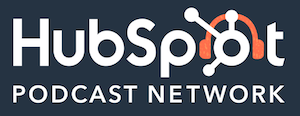
 In this episode of the Duct Tape Marketing Podcast, I interview Andrew Warden. Andrew is the
In this episode of the Duct Tape Marketing Podcast, I interview Andrew Warden. Andrew is the 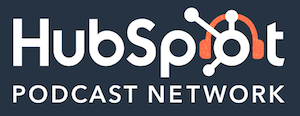
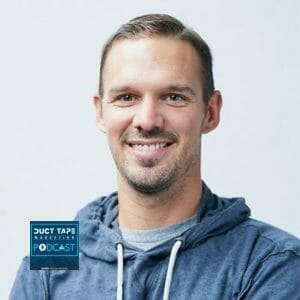 In this episode of the Duct Tape Marketing Podcast, I interview Chase Buckner. Chase
In this episode of the Duct Tape Marketing Podcast, I interview Chase Buckner. Chase 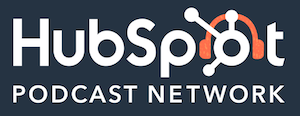
 In this episode of the Duct Tape Marketing Podcast, I interview Sam Garg. Sam is the
In this episode of the Duct Tape Marketing Podcast, I interview Sam Garg. Sam is the 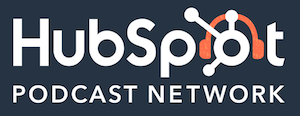
 In this episode of the Duct Tape Marketing Podcast, I interview Brad Feld. Brad has been an early-stage investor and entrepreneur since 1987. Prior to co-founding Foundry, he co-founded Mobius Venture Capital and is also a co-founder of Techstars. He’s also an author of a number of books including — Startup Boards: A Field Guide to Building and Leading an Effective Board of Directors.
In this episode of the Duct Tape Marketing Podcast, I interview Brad Feld. Brad has been an early-stage investor and entrepreneur since 1987. Prior to co-founding Foundry, he co-founded Mobius Venture Capital and is also a co-founder of Techstars. He’s also an author of a number of books including — Startup Boards: A Field Guide to Building and Leading an Effective Board of Directors.
 In this episode of the Duct Tape Marketing Podcast, I interview McKenna Sweazey. Mckenna’s global marketing career has spanned the spectrum of start-ups to corporations. McKenna’s own management experience, leading teams around the world, has provided the foundation for her speaking and coaching, around a structured approach to this new world of remote-first work. She’s also the author of a new book — How to Win Friends and Manage Remotely.
In this episode of the Duct Tape Marketing Podcast, I interview McKenna Sweazey. Mckenna’s global marketing career has spanned the spectrum of start-ups to corporations. McKenna’s own management experience, leading teams around the world, has provided the foundation for her speaking and coaching, around a structured approach to this new world of remote-first work. She’s also the author of a new book — How to Win Friends and Manage Remotely.
 In this episode of the Duct Tape Marketing Podcast, I interview Jamie Jay. Jamie
In this episode of the Duct Tape Marketing Podcast, I interview Jamie Jay. Jamie 
